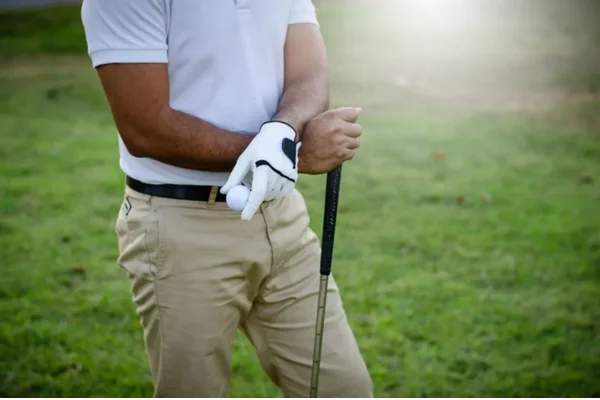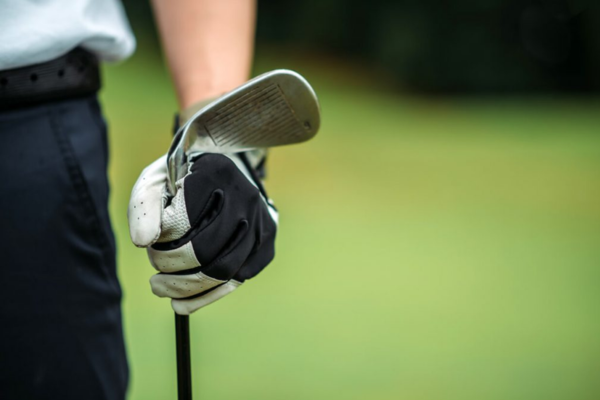The Purpose of a Golf Glove: A Comprehensive Guide

Golf is a game of precision, skill, and focus. Every swing, every putt, every stroke requires attention to detail. As any experienced golfer will tell you, the smallest factors can significantly influence performance on the course.
Among those factors is the use of a Golf Glove—a seemingly simple accessory that has a profound impact on a golfer’s game.
The purpose of a golf glove extends far beyond its role in grip enhancement; it contributes to comfort, performance, and even injury prevention.
In this article, we’ll explore in great detail the purpose of a Golf Glove, the reasoning behind wearing just one glove, the nuances of using a glove while putting, and the different types of gloves available on the market.
We’ll also dive into The Best Golf Gloves for various conditions, including humid weather and options for beginners. Whether you’re a seasoned player or just getting into the game, this guide will cover everything you need to know about golf gloves.
Related Article: Best Golf Stand Bags 2024
The Core Purpose of a Golf Glove: Enhancing Grip

The primary purpose of a golf glove is to provide a better grip on the club.
A secure grip is essential in golf because it allows the player to make consistent contact with the ball, delivering power, accuracy, and control.
Without a glove, a golfer’s hands may slip during a swing due to sweat, rain, or other moisture on the skin.
A club slipping mid-swing can lead to missed shots, errant ball flight, and reduced control over the game.
The added friction provided by the material of a glove allows a golfer to hold the club more securely, which is especially important during a full swing when the club moves at high speed.

Also Read This Article: Importance of Golf Gloves
A glove helps maintain that solid connection between hand and club—one of the most critical aspects of a successful swing.
Moreover, the improved grip also allows the golfer to grip the club less tightly.
This is crucial because holding the club too tightly can lead to tension in the hands, arms, and shoulders, which, in turn, affects the fluidity and smoothness of the swing.
A relaxed grip, facilitated by the glove, helps create a more natural and powerful swing.
Related Article: Best Golf Carts for 2024
The Science Behind Wearing One Glove
If you’ve ever watched professional golfers or been out on the course yourself, you may have noticed that most golfers wear just one glove—typically on their lead hand (the hand closer to the top of the grip).
For a right-handed player, this is the left hand, and for a left-handed player, this is the right hand. But why is this the case?
The lead hand plays a critical role in controlling the club. This hand does the bulk of the gripping, while the trailing hand acts more as a stabilizer.

Wearing a glove on the lead hand enhances the grip, improves control, and reduces the risk of the club twisting or slipping during the swing.
The trailing hand, by contrast, grips the club less firmly, and wearing a glove on this hand typically offers little benefit in terms of performance.
Golfers often choose to forgo a second glove because it could detract from feel.
The trailing hand doesn’t need as much grip as the lead hand, and adding a second glove can make it harder to feel the subtle vibrations and feedback from the club during a shot.
Many golfers prefer the tactile sensation of skin-on-club contact in their trailing hand, which helps with shot accuracy and control.
However, there are circumstances where a golfer might choose to wear two gloves, such as in cold weather (for warmth) or when dealing with blisters or cuts on the hands.
But for most golfers, one glove is all that’s needed to maximize performance and comfort.
Related Article: Best Golf Balls for Beginners 2024
The Debate: Should You Wear a Glove When Putting?
One of the more debated aspects of glove use in golf revolves around putting.
Many golfers take their glove off when stepping onto the green, believing that doing so allows for more precision and better feel during the delicate act of putting.
The idea is that removing the glove gives the golfer a better connection to the putter, allowing for greater control of the subtle movements required in a putt.
Those who take their glove off while putting often argue that the extra layer of material interferes with their touch and sensitivity, factors that are crucial in putting, where even minor adjustments in hand pressure and grip can influence the outcome.
On the other hand, some golfers, like myself, prefer to leave the glove on throughout the round, even while putting.
Personally, I’ve found no noticeable difference in performance whether I’m wearing the glove or not.
I’ve tested both methods, and in my experience, the glove doesn’t impact my ability to control the putter or make accurate putts.
Additionally, taking the glove off and putting it back on after each hole can be a hassle.
For some golfers, it’s simply a matter of convenience to leave the glove on while putting, allowing them to focus more on their shot without worrying about constantly adjusting their gear.
Ultimately, whether to wear a glove while putting comes down to personal preference. Some golfers swear by taking the glove off, while others, like me, see no need to do so.
It’s about what feels right for you and what helps you play your best game.
The Role of a Glove in Cold Weather

When the temperature drops, golf gloves serve an additional purpose—keeping your hands warm.
Cold hands can make gripping the club difficult and uncomfortable, and in extreme cases, it can even cause numbness or reduced dexterity, which is detrimental to a golfer’s swing.
In colder weather, some players opt to wear two gloves to keep both hands warm.
Winter Golf Gloves, which are thicker and more insulated than standard gloves, are designed specifically for these conditions.
They provide warmth while still maintaining a reasonable level of grip and flexibility.
Golfers who play in winter conditions or live in cooler climates often keep a pair of winter gloves in their bags.

Also Read This Article: Best Winter Golf Gloves 2024
These gloves offer extra insulation and are designed to maintain grip in wet or icy conditions.
Whether it’s for warmth or to handle damp weather, a good pair of winter gloves can make playing in adverse conditions much more comfortable and enjoyable.
Related Article: Best Golf Balls for Seniors 2024
Preventing Blisters and Injuries
One of the less obvious but equally important benefits of wearing a golf glove is preventing blisters and calluses.
Golfers spend hours gripping and swinging their clubs, and without a glove, the friction between the hands and the club can quickly lead to painful blisters, particularly for players who grip the club too tightly or for those just starting out.
By providing a protective layer between the hand and the club, golf gloves reduce friction and help prevent skin irritation.
This is particularly helpful for golfers who play frequently or for beginners who haven’t yet developed calluses on their hands. Blisters can sideline a golfer, affecting their ability to grip the club and play comfortably.
In addition to blisters, golf gloves can help prevent more serious injuries such as tendonitis, a common overuse injury in golfers.
By reducing the need for an overly tight grip, gloves alleviate pressure on the tendons in the hand, wrist, and forearm, reducing the risk of strain and injury.
Related Article: Best Golf Shoes 2024
The Evolution of Golf Gloves: From Leather to High-Tech Materials
Golf gloves have come a long way from their early days when they were primarily made from leather.
While leather gloves are still popular today for their soft feel and excellent grip, modern golf gloves have evolved to incorporate advanced materials that offer improved durability, flexibility, and breathability.
One of the most significant innovations in Golf Glove design is the use of synthetic materials.
These gloves are often lighter and more flexible than leather gloves, making them ideal for hot and humid conditions where excessive sweating can be an issue.
Synthetic gloves also tend to dry faster than leather gloves, making them more comfortable for all-day wear in wet conditions.
Another advancement is the introduction of mesh panels and breathable fabrics.
These features allow air to circulate more freely around the hand, reducing sweat buildup and keeping the hand cooler and more comfortable during long rounds in the heat.
This has been a game-changer for golfers who play in hot climates or during the summer months.
One of the most innovative gloves on the market today is the CaddyDaddy Claw Glove, which combines a breathable mesh back with a durable silicone palm.
This design provides the best of both worlds—ventilation to keep the hand cool and grip to ensure optimal control of the club.
Unlike traditional leather gloves, the Claw Glove is machine washable, making it easy to keep clean and fresh after multiple rounds.
Related Article: The Best Golf Mats of 2024
Best Golf Gloves for Hot, Humid Weather
If you play golf in hot, humid conditions, you know how uncomfortable it can be to wear a thick leather glove that traps sweat and heat.
Fortunately, there are golf gloves designed specifically for these conditions.
The CaddyDaddy Claw Glove is an excellent choice for hot weather. Its mesh top allows for superior airflow, keeping your hand cool and dry, while the silicone palm provides excellent grip even when your hand is sweaty.
Unlike leather gloves, which can become stiff and uncomfortable when they get wet, the Claw Glove remains flexible and comfortable, even in the hottest conditions.
Another great option is the FootJoy TropiCool Glove, which is designed for maximum breathability in hot weather.
The glove features moisture-wicking technology that helps keep your hand dry, while the micro-perforated synthetic material allows for airflow to keep your hand cool.
This glove is perfect for those humid summer rounds when you need something lightweight and breathable.
Related Article: DIY Golf Mat
Best Golf Gloves for Beginners
For beginners, finding the right golf glove can make a significant difference in their comfort and performance on the course. Beginners are often more prone to gripping the club too tightly, which can lead to blisters and hand fatigue.
A well-fitted glove can help alleviate these issues by providing a secure grip without the need for excessive hand pressure.
One of the best gloves for beginners is the Callaway Dawn Patrol Glove, which is made from premium leather for a soft feel and excellent grip.

It’s an affordable option that offers great durability and comfort, making it ideal for new golfers who are just getting started.
Another great choice for beginners is the TaylorMade Stratus Tech Glove, which features stretchable synthetic material for a comfortable, snug fit.
The glove’s reinforced palm provides added durability, while the breathable fabric ensures that your hand stays cool and comfortable throughout your round.
Durability and Care of Golf Gloves
No matter which type of glove you choose, taking care of it properly will help prolong its life and ensure that it performs at its best for as long as possible.
To maintain the durability of your golf glove, it’s important to rotate between multiple gloves if you play frequently.
This allows each glove time to dry out fully between rounds, preventing the material from breaking down due to excessive moisture.
If your glove becomes wet during a round, be sure to let it air dry rather than stuffing it into your golf bag, where it can become misshapen or develop an unpleasant odor.
You can also use a golf glove shaper to help the glove retain its shape after drying.
For gloves made from leather, it’s a good idea to wipe them down with a damp cloth after each round to remove any dirt or sweat that may have accumulated.
Leather gloves can also benefit from the occasional application of leather conditioner, which helps keep the material soft and supple.
As for synthetic gloves, many of them—such as the CaddyDaddy Claw Glove—are machine washable, making it easy to keep them clean and fresh.
Just be sure to follow the manufacturer’s care instructions to avoid damaging the glove.
Conclusion: The Purpose of a Golf Glove in Your Game
In conclusion, the Golf Glove is much more than a simple accessory; it is an essential tool that enhances your game in multiple ways.
From providing a secure grip that helps you maintain control of the club to preventing blisters and injuries, a Good Golf Glove can significantly improve your comfort and performance on the course.
Whether you’re a beginner just learning the ropes or a seasoned player looking for an edge, choosing the right golf glove can make a noticeable difference.
With options available for every playing condition—whether hot and humid, cold and rainy, or anything in between—you’re sure to find a glove that meets your needs and helps you play your best.
So next time you’re gearing up for a round of golf, take a moment to appreciate the role that your golf glove plays in your game.
It may just be the small detail that helps you hit that perfect shot.
